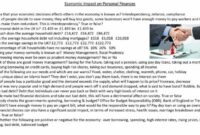Remote work culture is reshaping the modern workplace, offering flexibility and autonomy while presenting new challenges. From fully remote teams to hybrid models, understanding the different arrangements and their impact on employee well-being is crucial. This exploration delves into the evolving landscape of remote work, covering everything from communication strategies to essential technologies.
The changing dynamics of remote work require careful consideration of employee well-being. Maintaining work-life balance and fostering strong team cohesion are paramount. This discussion will highlight strategies for success in this evolving model, encompassing the practical aspects of communication and the technologies that facilitate it.
Defining Remote Work Culture
Remote work culture, a significant shift from traditional office environments, is characterized by employees working outside of a central office location, typically from home. This flexibility is driven by technological advancements, allowing for seamless communication and collaboration across geographical boundaries. It’s a dynamic landscape that continues to evolve, impacting work-life balance, productivity, and the very fabric of the modern workplace.
This evolving culture reflects a move towards more distributed teams and a recognition that productivity isn’t tied to a specific physical location. Early adoption of remote work was often driven by individual needs, but today’s remote work culture encompasses a variety of arrangements, catering to both employee preferences and business requirements. The key distinction lies in the shift from a centralized physical workspace to a more dispersed, flexible model.
Evolution of Remote Work Culture
Remote work, while not new, has seen exponential growth in recent years. Initially, it was often a niche practice, employed for specific tasks or by individuals with unique circumstances. The rise of the internet and readily available communication technologies spurred this growth, allowing for increased collaboration and project completion regardless of geographical location. The COVID-19 pandemic significantly accelerated the adoption of remote work, forcing businesses to adapt rapidly and proving the viability of a distributed workforce. Today, remote work culture is firmly established as a viable and often preferred option for many employees and organizations.
Types of Remote Work Arrangements
Remote work arrangements come in various forms, each with its own advantages and challenges. The key distinction lies in the level of flexibility and the balance between remote and in-office work.
| Arrangement | Description | Pros | Cons |
|---|---|---|---|
| Fully Remote | Employees work entirely from home. | Increased flexibility, autonomy, potentially reduced commuting time and costs, and a greater work-life balance. | Potential for isolation, difficulty in fostering team cohesion, potential for blurred boundaries between work and personal life if not carefully managed. |
| Hybrid | Employees split their time between the office and home. | Offers a balance of flexibility and collaboration, enabling face-to-face interaction and team building while maintaining flexibility. | Potential for scheduling conflicts, difficulty in maintaining consistent workflow, and potential for blurred boundaries between work and personal life if not managed effectively. |
| Part-Time Remote | Employees work remotely for a portion of their work week. | Provides flexibility while maintaining some in-office presence for collaboration. | May require careful scheduling to maintain continuity of work, potentially causing challenges in team coordination. |
Differences Between Remote and Traditional Office Culture
Remote work culture differs significantly from traditional office culture in several key aspects. Traditional office culture often prioritizes in-person interaction, which can lead to stronger social connections among colleagues. Remote work, on the other hand, emphasizes digital communication and tools for collaboration. This shift impacts how teams communicate, build relationships, and manage projects. Remote work fosters a greater emphasis on self-management and time management skills, while traditional office culture often relies on structured work schedules and in-person supervision. The trust and accountability aspects in both models are critical for success.
Impact on Employee Well-being
Remote work offers flexibility, potentially boosting work-life balance and reducing commute stress. However, it also presents unique challenges that can impact employee well-being. The shift to remote work necessitates a careful examination of both the positive and negative aspects to ensure a healthy and productive workforce.
Remote work environments can be beneficial in many ways, such as providing employees with more control over their schedules and work-life balance. However, a lack of structure and clear boundaries can lead to increased stress and burnout. It’s crucial to understand the factors that contribute to well-being in these environments to mitigate potential issues and foster a supportive work culture.
Positive Impacts on Employee Well-being
Remote work can lead to improved work-life balance for many employees. Reduced commute times and greater flexibility in scheduling can allow employees to better manage personal responsibilities. This can translate into reduced stress levels and improved overall well-being. Additionally, the freedom to work from a more comfortable and familiar environment can boost productivity and focus for some individuals.
Negative Impacts on Employee Well-being
The lack of physical interaction with colleagues can sometimes lead to feelings of isolation and loneliness. Blurred boundaries between work and personal life can also be a significant concern, potentially leading to increased stress and burnout. Furthermore, a lack of clear communication and structure can create uncertainty and anxiety in some remote workers. A lack of in-person collaboration and team building activities can also negatively affect morale.
Factors Influencing Employee Well-being in Remote Work Environments
Several factors contribute to employee well-being in remote work settings. These include strong company culture, clear communication, effective technology infrastructure, and access to adequate resources. Additionally, employees’ individual preferences, work styles, and personal circumstances play a significant role. The design of the remote work environment, such as the availability of dedicated workspaces, also impacts well-being.
Strategies for Maintaining Employee Well-being in Remote Work Settings
Establishing clear boundaries between work and personal life is crucial. This includes setting specific work hours, designating a dedicated workspace, and taking regular breaks. Encouraging open communication and fostering a sense of community within the remote team can help mitigate feelings of isolation. Providing access to resources like mental health support and wellness programs can also significantly enhance employee well-being.
Challenges Associated with Maintaining Work-Life Balance in Remote Work Environments
Maintaining a healthy work-life balance in a remote setting can be challenging. The lack of a physical separation between work and home can blur these boundaries, potentially leading to longer work hours and decreased personal time. The increased flexibility can also make it harder to disconnect and switch off from work responsibilities.
Well-being Strategies for Remote Employees
| Strategy | Description | Example |
|---|---|---|
| Regular Breaks | Scheduling short breaks throughout the workday to avoid burnout and maintain focus. | Taking a 15-minute walk outside, stretching, or meditating. |
| Dedicated Workspace | Creating a designated space for work, separate from personal areas, to enhance focus and productivity. | Setting up a home office or a specific corner in the house for work. |
| Structured Schedule | Establishing a consistent daily schedule with defined work hours and breaks to maintain productivity and structure. | Using a calendar to schedule work tasks and personal appointments. |
| Regular Check-ins | Scheduling regular check-ins with colleagues and supervisors to maintain connection and address any concerns. | Holding virtual team meetings or one-on-one calls. |
| Mindfulness and Relaxation Techniques | Incorporating mindfulness practices like meditation or deep breathing exercises to manage stress and improve well-being. | Practicing mindfulness during breaks or before bed. |
Communication and Collaboration in Remote Teams

Source: ctfassets.net
Remote work culture is definitely changing the game, and for those who need a space to get things done outside of the office, finding the right hotel is key. For example, hotels in the UK for business travelers with meeting rooms here offer a great blend of comfort and functionality, perfect for productive work sessions. It’s all about finding the right balance for a seamless remote work experience.
Remote work thrives on effective communication and collaboration. Without strong connections and clear lines of communication, teams can easily become fragmented and less productive. This section explores essential strategies and tools for successful remote teamwork.
Effective communication is the cornerstone of any successful remote team. Clear and consistent communication fosters trust, reduces misunderstandings, and keeps everyone informed. It’s crucial to establish a communication protocol that works for the team, ensuring everyone feels heard and valued.
Effective Communication Strategies for Remote Teams
Clear communication is paramount for remote teams. Establishing clear communication channels and expectations is essential for streamlining information flow and fostering a sense of shared understanding. This includes outlining preferred methods for different types of communication, from urgent updates to detailed project discussions. Consistency in communication styles and channels will minimize ambiguity and foster a more collaborative environment.
Collaborative Tools and Platforms
Various tools facilitate seamless collaboration in remote work environments. Project management platforms like Asana, Trello, and Monday.com allow teams to organize tasks, track progress, and communicate about projects in one central location. Communication platforms like Slack and Microsoft Teams enable instant messaging, file sharing, and video conferencing, fostering real-time interaction. These tools streamline workflows and enhance productivity. Video conferencing platforms are also vital for maintaining a sense of team cohesion, as they facilitate visual communication and enable more nuanced interactions.
Challenges of Fostering Strong Relationships and Team Cohesion
Building strong relationships and team cohesion in a remote setting presents unique challenges. The lack of face-to-face interaction can make it harder to develop trust and rapport, and maintain a sense of camaraderie. It’s important to proactively address this by implementing strategies that encourage team bonding and communication.
Building Trust and Rapport with Remote Colleagues
Building trust and rapport with remote colleagues requires conscious effort. Regular check-ins, both formal and informal, are essential for fostering personal connections. Sharing personal stories and interests, within appropriate boundaries, can help colleagues feel more connected and humanize the remote work experience. Active listening and thoughtful responses demonstrate respect and build rapport.
Tips for Clear and Concise Remote Communication
Effective communication in remote work environments demands clarity and conciseness. Using clear and concise language, avoiding jargon, and ensuring that messages are easily understandable is key. Proofreading communications before sending them is also critical. Using relevant emojis and GIFs can add personality and make communications more engaging.
Communication Channel Appropriateness
This table highlights different communication channels and their appropriate use cases.
| Communication Channel | Description | Use Case |
|---|---|---|
| Video Conferencing | Real-time interaction with visual cues | Team meetings, brainstorming sessions, important announcements, complex problem-solving |
| Instant Messaging | Quick, informal communication | Quick questions, updates, clarifying information, status checks |
| Formal communication, documentation | Project updates, formal announcements, detailed instructions, record-keeping | |
| Project Management Tools | Centralized task management, communication, and collaboration | Project assignments, progress tracking, communication related to specific tasks |
Technology and Tools for Remote Work
Remote work relies heavily on technology to bridge the physical distance between employees. Effective communication and collaboration are crucial for success, and the right tools can significantly improve productivity and efficiency. Choosing the right technology is key to creating a smooth and productive remote work environment.
Modern remote work relies on a wide array of technological tools to facilitate communication, collaboration, and task management. This includes everything from high-speed internet to specialized software platforms. Selecting appropriate tools is essential for maintaining productivity and fostering a positive work experience.
Essential Technologies for Remote Work
The foundation of any remote work setup is reliable internet access. High-speed internet is vital for seamless video conferencing, file sharing, and cloud storage. Reliable internet connectivity is fundamental for smooth operation in a remote environment. Reliable connectivity enables real-time communication, which is a cornerstone of remote collaboration. Reliable internet access is a prerequisite for smooth functioning in a remote work setup.
Comparison of Remote Collaboration Platforms
Different platforms offer varying features and functionalities for remote collaboration. Project management software, such as Asana or Trello, excels at task management and communication. Video conferencing platforms like Zoom or Google Meet facilitate real-time interactions, allowing for face-to-face communication. Cloud storage services, like Google Drive or Dropbox, enable easy file sharing and version control. These platforms collectively provide a comprehensive solution for managing tasks and fostering communication within a remote team.
Impact of Technology on Productivity and Efficiency
Technology significantly impacts productivity and efficiency in remote work environments. Efficient communication and streamlined workflows contribute to higher productivity levels. Real-time collaboration tools facilitate faster decision-making and problem-solving. The ability to access information and tools remotely allows employees to work from anywhere with a stable internet connection, fostering greater flexibility.
Emerging Technologies and Their Impact
Emerging technologies, such as AI-powered chatbots and virtual reality (VR) tools, are poised to reshape remote work. AI chatbots can automate tasks, freeing up employees for more strategic work. VR can create immersive virtual meeting spaces, further enhancing collaboration and communication. These technologies have the potential to dramatically increase efficiency and improve the overall remote work experience.
Key Software and Hardware for Remote Work
A comprehensive remote work setup requires a combination of software and hardware. Essential software includes project management tools, communication platforms, and cloud storage solutions. Hardware needs include a reliable computer, a high-quality webcam, a headset, and a stable internet connection. Having the appropriate tools and technologies in place is crucial for a smooth and productive remote work experience.
Collaboration Tools: Features and Benefits
| Tool | Features | Benefits |
|---|---|---|
| Project Management Software (e.g., Asana, Trello) | Task assignment, deadlines, progress tracking, communication channels | Improved organization, enhanced collaboration, better visibility of project status |
| Video Conferencing Platforms (e.g., Zoom, Google Meet) | Real-time meetings, screen sharing, video/audio calls, chat | Facilitates face-to-face interactions, enhances communication, reduces misinterpretations |
| Instant Messaging Platforms (e.g., Slack, Microsoft Teams) | Real-time communication, file sharing, integrations with other tools | Fast communication, improved teamwork, streamlined information exchange |
| Cloud Storage Services (e.g., Google Drive, Dropbox) | File sharing, version control, accessibility from anywhere | Centralized file management, secure data storage, easy collaboration on documents |
Remote Work Culture and Company Policies
Remote work is no longer a fringe benefit; it’s a mainstream expectation for many employees. A well-defined remote work culture, supported by clear company policies, is crucial for success. These policies help establish expectations, manage potential issues, and foster a productive and positive work environment for everyone.
Strong remote work policies are essential to ensure a smooth transition and continued success. They provide a framework for managing communication, collaboration, and work-life balance, all while maintaining company productivity and values.
Importance of Company Policies for Remote Work
Clear policies Artikel expectations for work hours, communication protocols, and access to resources. They also address issues like equipment provision, security, and compliance. Without well-defined policies, remote teams can experience challenges with communication breakdowns, inconsistent productivity, and blurred boundaries between work and personal life. Comprehensive policies help ensure everyone is on the same page, promoting fairness and efficiency.
Challenges of Implementing Remote Work Policies, Remote work culture
Implementing remote work policies isn’t always straightforward. Companies often face challenges like maintaining consistent communication channels, ensuring equal access to resources for remote workers, and adapting existing processes to the remote work model. Security concerns, differing time zones, and potential cultural clashes can also present difficulties. Careful planning and a phased implementation strategy can help mitigate these challenges.
Examples of Successful Remote Work Policies
Several companies have successfully implemented remote work policies. These include flexible work hours, robust communication platforms, and readily available remote-work-friendly tools. Examples of best practices involve providing training on communication and collaboration tools, setting clear expectations for productivity, and creating opportunities for remote workers to connect and build relationships. Some companies also offer remote-specific equipment, like ergonomic chairs or high-speed internet access.
Adapting Existing Policies for Remote Work
Companies can adapt existing policies to accommodate remote work by incorporating provisions for remote access to company resources, establishing clear guidelines for communication, and providing training on remote collaboration tools. This may involve updating HR policies regarding work hours, equipment usage, and employee conduct. Flexibility is key; policies must evolve with the changing remote work landscape.
Best Practices for Managing Remote Teams and Projects
Managing remote teams requires a shift in approach. Companies need to emphasize transparency, proactive communication, and trust. Regular check-ins, project management tools, and clear goals are essential. Encouraging team-building activities and virtual social events can also foster a sense of community and belonging. Implementing effective feedback mechanisms is equally important.
Sample Remote Work Policy
Company Remote Work Policy
This policy Artikels the company’s commitment to supporting remote work for eligible employees. Remote work is permitted for employees who can demonstrate the ability to successfully perform their job duties remotely. The company provides guidelines for remote work, including expectations for communication, productivity, and adherence to company policies. The company recognizes that remote work necessitates a shift in how we work and communicate, but it remains committed to maintaining the same high standards of performance and professionalism. Specific guidelines include:* Communication: Regular check-ins and clear communication protocols are expected.
* Technology: The company will provide necessary equipment and support for remote work.
* Security: Remote workers are expected to adhere to company security policies.
* Work Hours: Remote work hours should align with core work hours.
* Project Management: Project management tools and procedures are in place to facilitate effective collaboration.
* Access to Resources: Remote workers have access to company resources.
* Performance Evaluation: Performance evaluations for remote workers will be conducted in the same manner as for on-site workers.This policy is subject to review and revision as needed.
Summary: Remote Work Culture
In conclusion, remote work culture is a dynamic and evolving environment. Its success depends on thoughtful strategies for employee well-being, robust communication channels, and effective use of technology. Companies adapting to this model can unlock increased productivity, flexibility, and a more engaged workforce. While challenges remain, embracing the opportunities of remote work is key to future success.
General Inquiries
What are some common misconceptions about remote work?
Many believe remote work is inherently less productive or leads to a lack of connection. However, with effective strategies, remote teams can be just as productive and even more collaborative, provided that clear communication channels and well-defined roles are established.
How can companies ensure that remote workers feel connected to the company culture?
Regular virtual team-building activities, company-wide communication channels, and opportunities for informal interaction can help foster a sense of community and belonging.
What are the key considerations when choosing remote work software?
Consider the specific needs of your team, such as project management, communication, or file sharing. Features like real-time collaboration, task management, and secure file sharing are essential.
What are some best practices for maintaining work-life balance while working remotely?
Establish clear boundaries between work and personal time, schedule regular breaks, and prioritize self-care. Communicating your availability and expectations to colleagues is also important.
Remote work culture is definitely changing how we work, and co-working spaces are playing a huge role in that. These spaces provide a flexible and collaborative environment, perfect for remote workers needing a change of scenery or a dedicated workspace. They offer a sense of community and resources that can really enhance the remote work experience. Ultimately, remote work culture benefits greatly from the flexibility and support that co-working spaces provide.
Co-working spaces are a great option for remote workers.
Remote work culture is booming, and it’s changing how we think about office spaces. Companies are increasingly considering sustainable architecture, like those practices explored in detail at Sustainable architecture , to create eco-friendly and efficient remote work hubs. This focus on sustainability is a great step towards a more environmentally conscious remote work future.
Remote work culture is booming, and it’s opening up a whole new world of possibilities. One of those is the ability to explore passive income streams, which can be a real game-changer for freelancers and remote workers. Passive income streams can provide a steady supplemental income, which is great for those seeking financial freedom and flexibility within their remote work setup.
This flexibility is a key part of why remote work is so appealing.
Remote work culture is all about flexibility and autonomy, but sometimes it can blend into a “hustle culture” environment, where the pressure to constantly work can become overwhelming. This often leads to burnout, and can impact work-life balance. Thankfully, a good remote work culture is about finding a healthy balance, and not getting caught up in the pressure of Hustle culture.
Companies need to encourage breaks and proper time management for employees working remotely.




